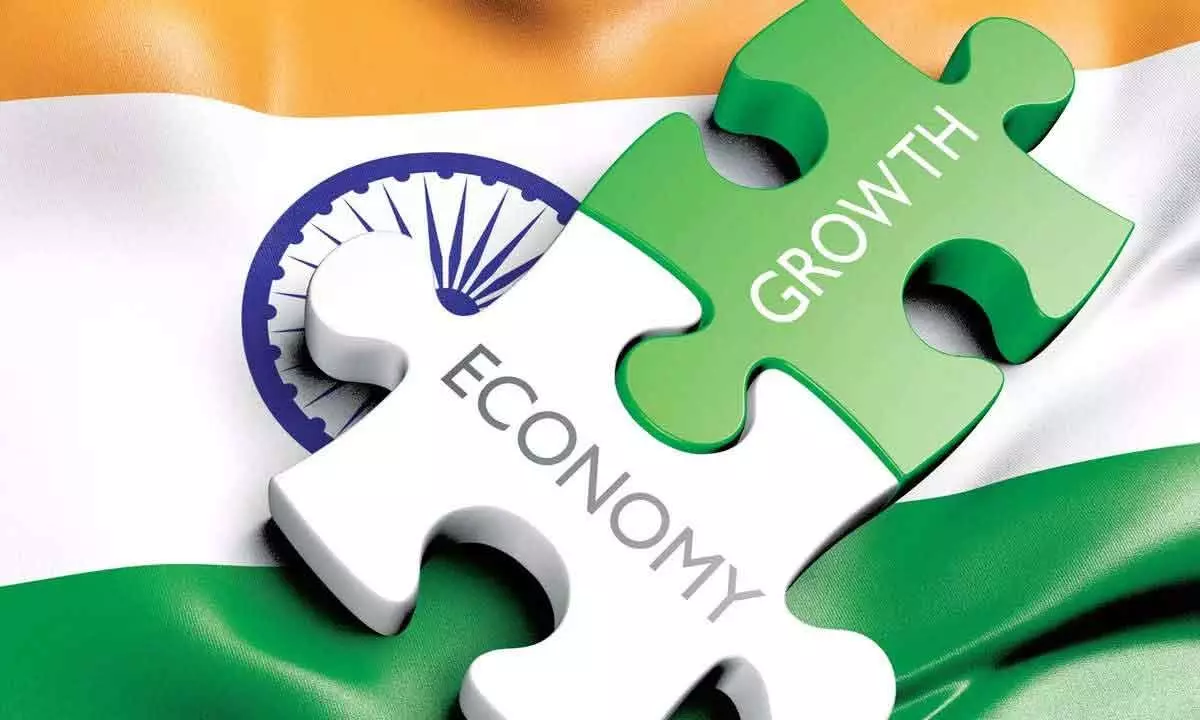India’s economic growth is not without challenges
image for illustrative purpose

India as one of the fastest growing economies is aspiring to attain a high middle income status by 2047 as befitting commemoration for the centenary of independence. It is also committed to effectively deal with the challenges of climate change so as to achieve net-zero emissions by 2070. This aspiration can be realised through a climate-resilient growth process that delivers broad-based gains to the bottom half of the population. Growth-oriented reforms will need to be accompanied by an expansion in good jobs that keeps pace with the number of labour market entrants. At the same time, gaps in economic participation will need to be addressed, including by bringing more women into the workforce. Economic growth in the US, Germany and Japan has slowed down with projections ranging from one to 1.4 per cent for 2024. As per the World Bank's Economic Outlook, the US is expected to grow at 1.4 per cent in 2024, while Germany at 1.1 per cent and Japan at 1 per cent.
India, on the other hand, is projected to grow at 6.3 per cent in 2024 and China at 4.5 per cent. China's economic growth too is expected to falter in the coming years due to a combination of factors including the decline in the working-age population.
Goldman Sachs, another investment banking firm, recently said India will become the world's second-largest economy by 2075 as it has made more progress in innovation and technology than some may realise. It pointed out that innovation and increasing worker productivity will be crucial for India. The size of the economy will cross four trillion in 2024 -25 and the per capita nominal GDP will also cross $ 2800, according to an analysis conducted by PHD Chamber of Commerce and Industry. An economy's infrastructure is pivotal in propelling its progress and setting the stage for its future development possibilities. Infrastructure development is crucial to achieve India’s 2047 vision of being a $ 40 trillion economy. In the aftermath of Covid-19 and global digitization, the focus rests not only on physical infrastructure, but also equally on digital and social infrastructure.
The collective development of infrastructure is propelling the country’s economic growth. With increased demand for labour, goods and capital expenditure on infrastructure, there is an increase in industrial growth. Studies by the Reserve Bank of India (RBI) and the National Institute of Public Finance and Policy (NIPFP) estimate that for every rupee spent on infrastructure, there is a 2.5 to 3.5 rupee gain in GDP. Trade will stand to benefit as logistics and connectivity improve and the people will gain from a better quality of life with a significant improvement in critical infrastructure and an overall increase in per capita income. India can thus truly realize its vision of becoming a developed nation by 2047. The country may be boasting insolent growth of 7.2% (2022-2023), but this is not enough to absorb the 10 to 12 million new entrants to the job market every year.

